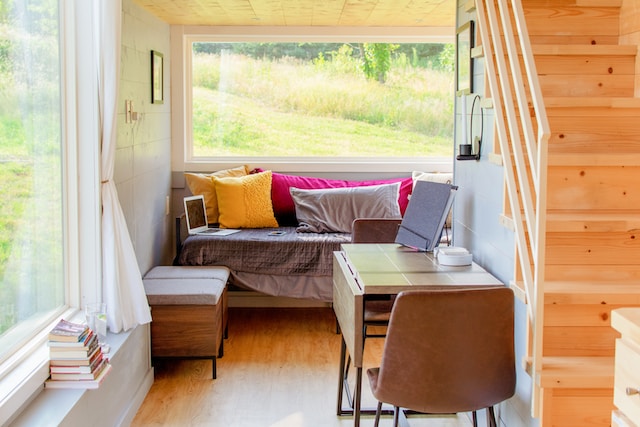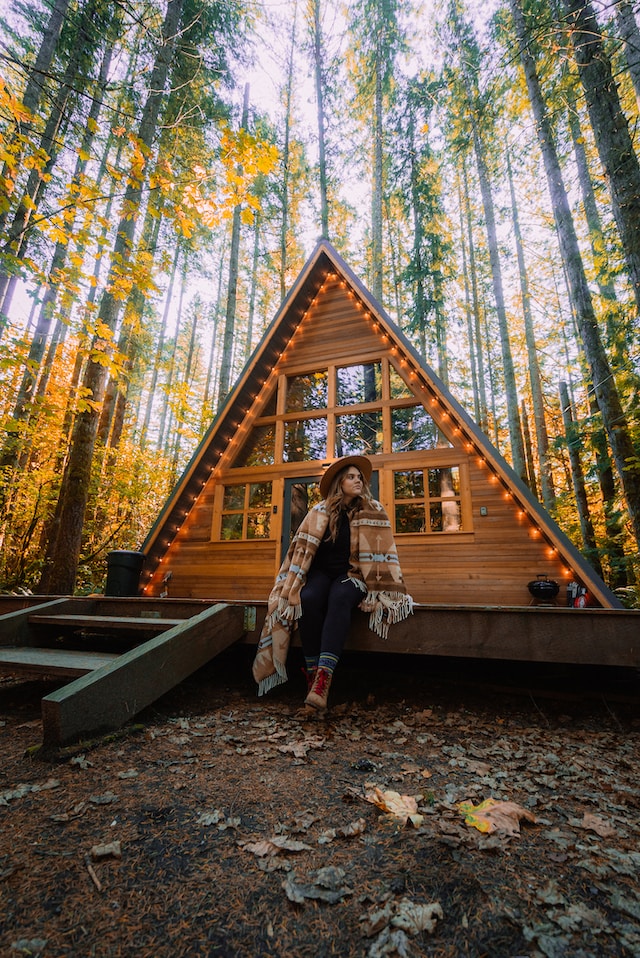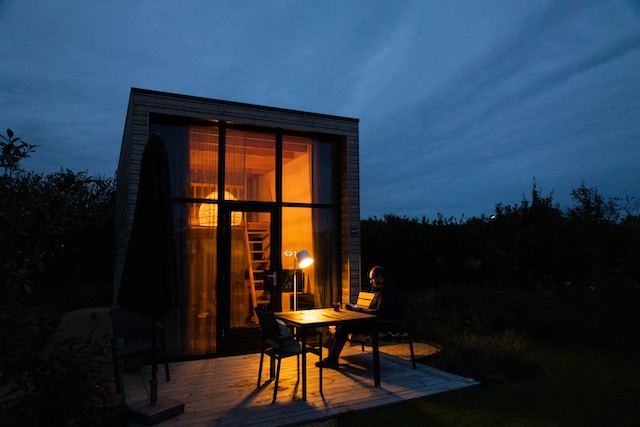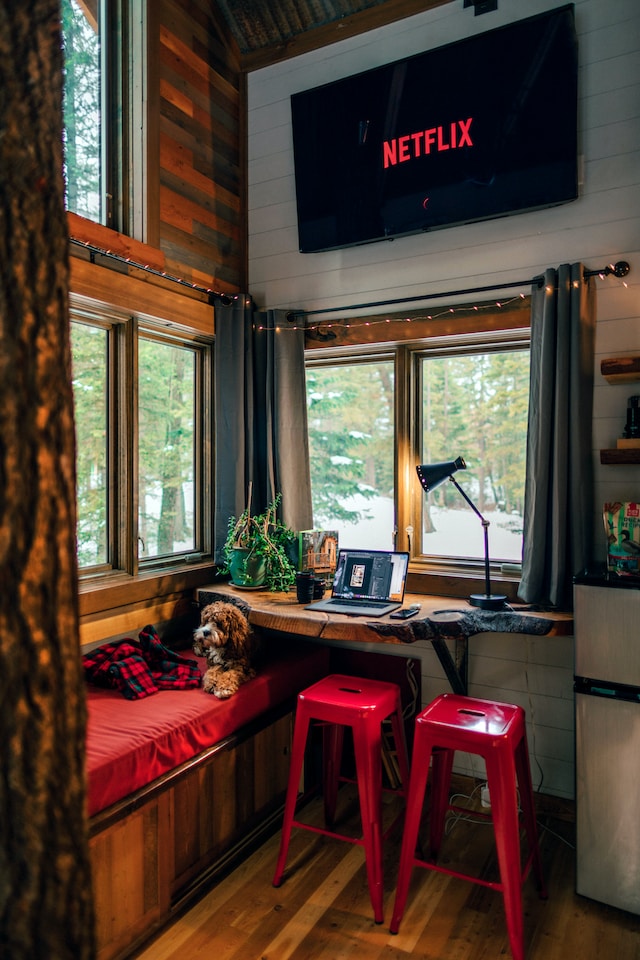
Tiny living, though not a new concept, has been gaining popularity in recent years. It’s easy to see why- living simply in a small space has numerous benefits, and people have been taking notice. Here are just a few of the advantages to living tiny:
Space Efficiency
The idea of tiny living means maximizing every square inch of space available. When it comes to living in a small space, making the most of what you have is a must. Here are some ways to make your small living space feel bigger and more efficient:
Maximizing limited space: The key to making the most of tiny living is learning to think spatially. Get creative and utilize every inch of space available. Built-in storage solutions, such as under-bed drawers or kitchen cabinets that go up to the ceiling, can make a big difference in maximizing space.
Decluttering and minimizing possessions: When it comes to tiny living, less is definitely more. Decluttering is essential when living in a small space. It’s important to only keep what you absolutely need and what brings you joy. Minimalism doesn’t mean you can’t have possessions, but it does mean that everything in your home should serve a purpose or bring you happiness.
Creative storage solutions: In a small space, storage can be a challenge. That is why it’s important to get creative with storage solutions. For example, using space-saving furniture like a Murphy bed with built-in shelving or installing floating shelves can help maximize space without sacrificing style.
Reduced cleaning and maintenance: When your living space is small, cleaning and maintenance become a breeze. You won’t need to spend as much time cleaning and organizing because there is less space to accumulate clutter. Plus, with fewer possessions, you’ll have fewer things to maintain and keep tidy.
Financial Advantages of Tiny Living

Lower housing costs
One of the biggest advantages of tiny living is the lower housing costs. With minimal square footage, the cost of tiny homes and apartments are significantly lower when compared to traditional homes. This means you can save money on mortgage or rent payments, and direct those savings towards other important expenses like healthcare, education, and retirement savings.
Reduced utility expenses
Another financial advantage of tiny living is the reduced utility expenses that come with a smaller living space. Tiny homes require less energy to heat and cool, and some even rely on sustainable sources of energy such as solar panels. This means you can save money on monthly electricity, gas, and water bills and reduce your carbon footprint.
Affordability and minimalism
Tiny living encourages a minimalist lifestyle and helps reduce unnecessary expenses. With limited storage space, you are forced to downsize your possessions and focus on the things that truly matter. This can lead to a more intentional and mindful way of living while saving money on consumer goods and entertainment expenses.
Opportunities for mortgage-free living
Financial freedom is a significant advantage of tiny living. Many tiny homeowners choose to live mortgage-free and own their homes outright. This means zero mortgage payments, and more financial flexibility to tackle other financial goals like saving for retirement or starting a small business.
Environmental Benefits of Tiny Living
Tiny living not only has a positive impact on our lives, but also on the environment. With the smaller living space and minimalist lifestyle, comes a smaller carbon footprint. Here are some environmental benefits of tiny living:
Reduced Carbon Footprint: Tiny living promotes living sustainably by reducing the amount of energy and resources used. With a smaller space to heat and cool, and the use of sustainable energy sources such as solar panels, the carbon footprint of tiny homes and apartments is significantly lower than traditional homes.
Energy Efficiency and Sustainability: Tiny living encourages a greener lifestyle by reducing energy consumption and promoting sustainability. Tiny homes are built with energy efficient materials and appliances that consume less energy, resulting in lower utility bills and reduced greenhouse gas emissions.
Use of Eco-Friendly Materials: The materials used to build tiny homes are often environmentally friendly, such as recycled materials and non-toxic materials. These materials are not only better for the environment, but also for our health.
Lower Resource Consumption: Tiny living also promotes the conservation of resources through the use of minimalistic design and intentional living. With less space to fill, tiny homeowners often choose to invest in quality items made to last, reducing the need to frequently replace household items.

Simplified Lifestyle
Tiny living often fosters a minimalist mindset, encouraging individuals to focus on what they truly need versus what they think they need. This means downsizing possessions and decluttering the unnecessary. By doing so, you free up physical space in your tiny home, but also mental space in your mind. Clearing out excess stress and unnecessary belongings can lead to increased clarity and focus, leading to a calmer and happier lifestyle.
In addition, tiny living emphasizes experiences over possessions. When you have limited space, you prioritize the things that bring you joy, such as spending time with loved ones or pursuing hobbies and interests. By prioritizing experiences, you create more meaningful memories that can enrich your life and make you happier in the long run.
Another advantage of tiny living is the increased mobility and freedom it offers. With a smaller home, you have more flexibility to pick up and move to a new location. This can be a huge advantage for those who want to travel or have a job that requires frequent moves. You can even take your tiny home with you on the road, giving you the freedom to explore new places without sacrificing the comfort of home.
Tiny living also encourages a better work-life balance. With fewer maintenance tasks and less clutter to clean, you have more time to focus on the things that matter most, like spending time with loved ones, pursuing hobbies, or simply relaxing. This can lead to decreased stress and increased happiness and fulfillment in life. Ultimately, tiny living can help you prioritize your life and focus on the things that truly matter, leading to a simpler, happier, and more fulfilled lifestyle.
Flexibility and Adaptability
Flexibility and adaptability are key benefits of tiny living that are often overlooked. Here are some ways in which tiny living offers more flexibility and adaptability than traditional housing:

Mobility and travel opportunities – One of the most significant benefits of tiny living is that it offers more mobility and freedom to travel. With a tiny home or apartment, you have the ability to pick up and move wherever you choose. This can be particularly advantageous for those with jobs that require frequent moves or for those who love to travel. You can even take your tiny home with you on the road, making it the perfect housing solution for digital nomads and adventurers.
Adapting to changing life circumstances – Tiny living also provides a way to adapt to changing life circumstances. Whether you experience a change in your career, family situation, or even lifestyle preferences, a tiny home can be modified to fit your needs. You have the ability to design and build your tiny home in a way that suits your current lifestyle, and you can easily modify or upgrade it as your needs change over time.
Smaller ecological footprint during relocation – Another one of the many benefits of tiny living is the reduced ecological footprint during relocation. With a smaller living space, you require less energy and fewer resources to move your home, making it a more sustainable housing option. Additionally, if you choose to use sustainable energy sources like solar panels, you can reduce your carbon footprint even further.
Creative use of space for multifunctional purposes – Finally, tiny living encourages a creative use of space for multifunctional purposes. When you have limited space, you must think creatively about how to make the most of every square inch. This means utilizing furniture that can serve multiple purposes, like a sofa that converts into a bed or a table that doubles as a desk. By getting creative with your space, you can live comfortably and efficiently in a small home or apartment.
Overall, tiny living offers a way to simplify your life and reduce unnecessary stress. It allows you to focus on the things that truly matter, and break free from the constraints of a consumer-driven society. It may not be for everyone, but for those who choose it, it can be a fulfilling and rewarding lifestyle.
